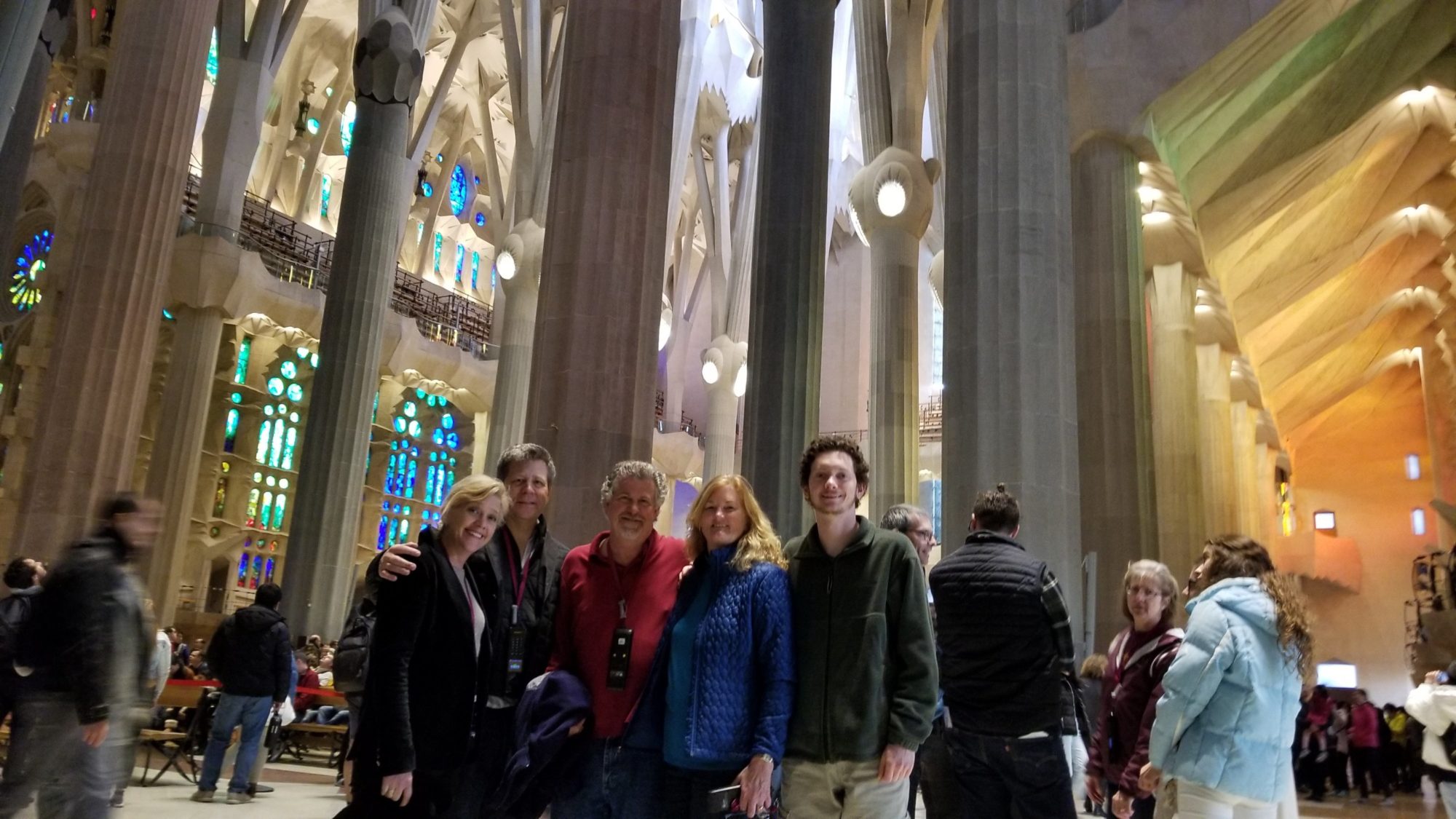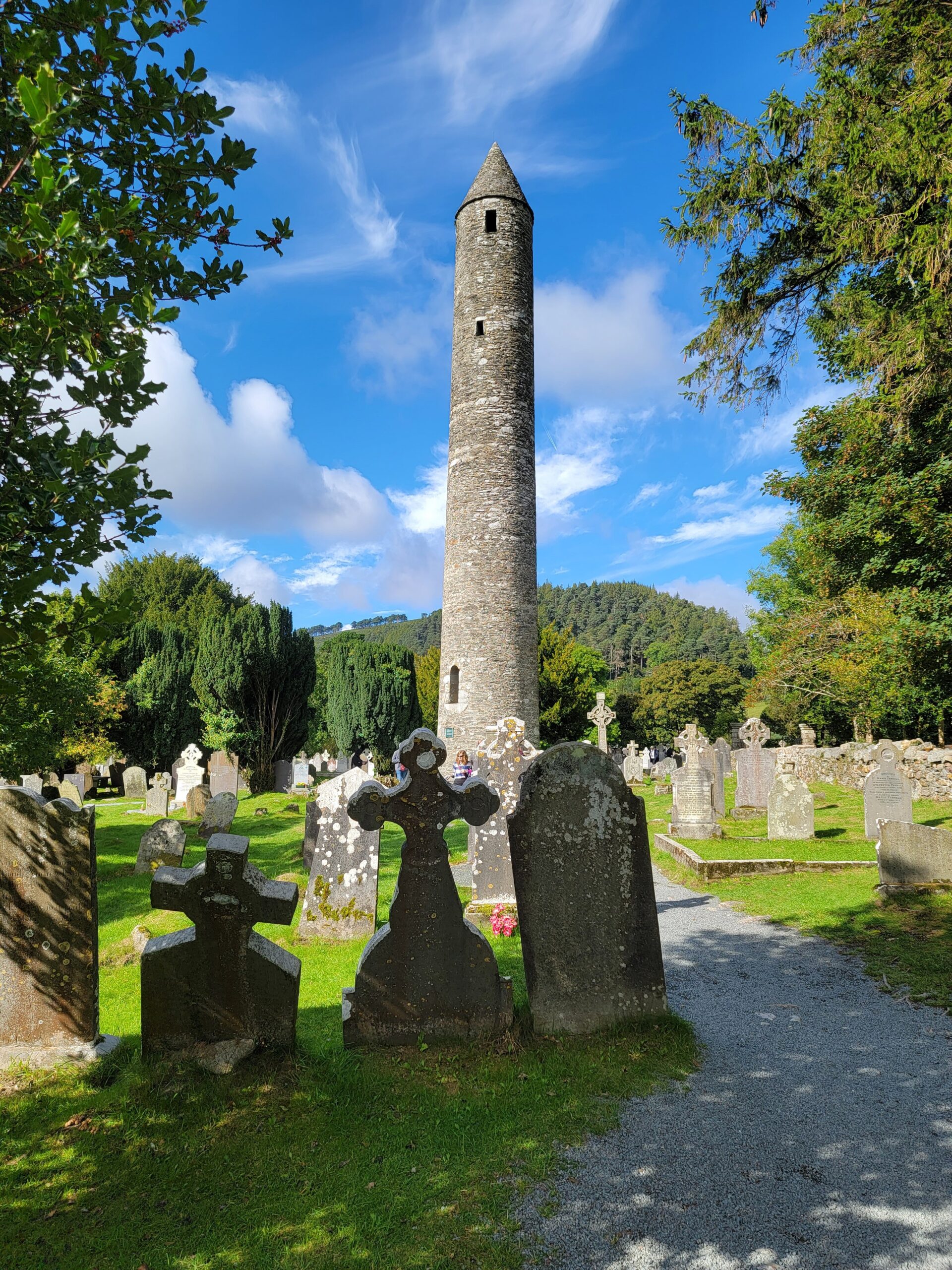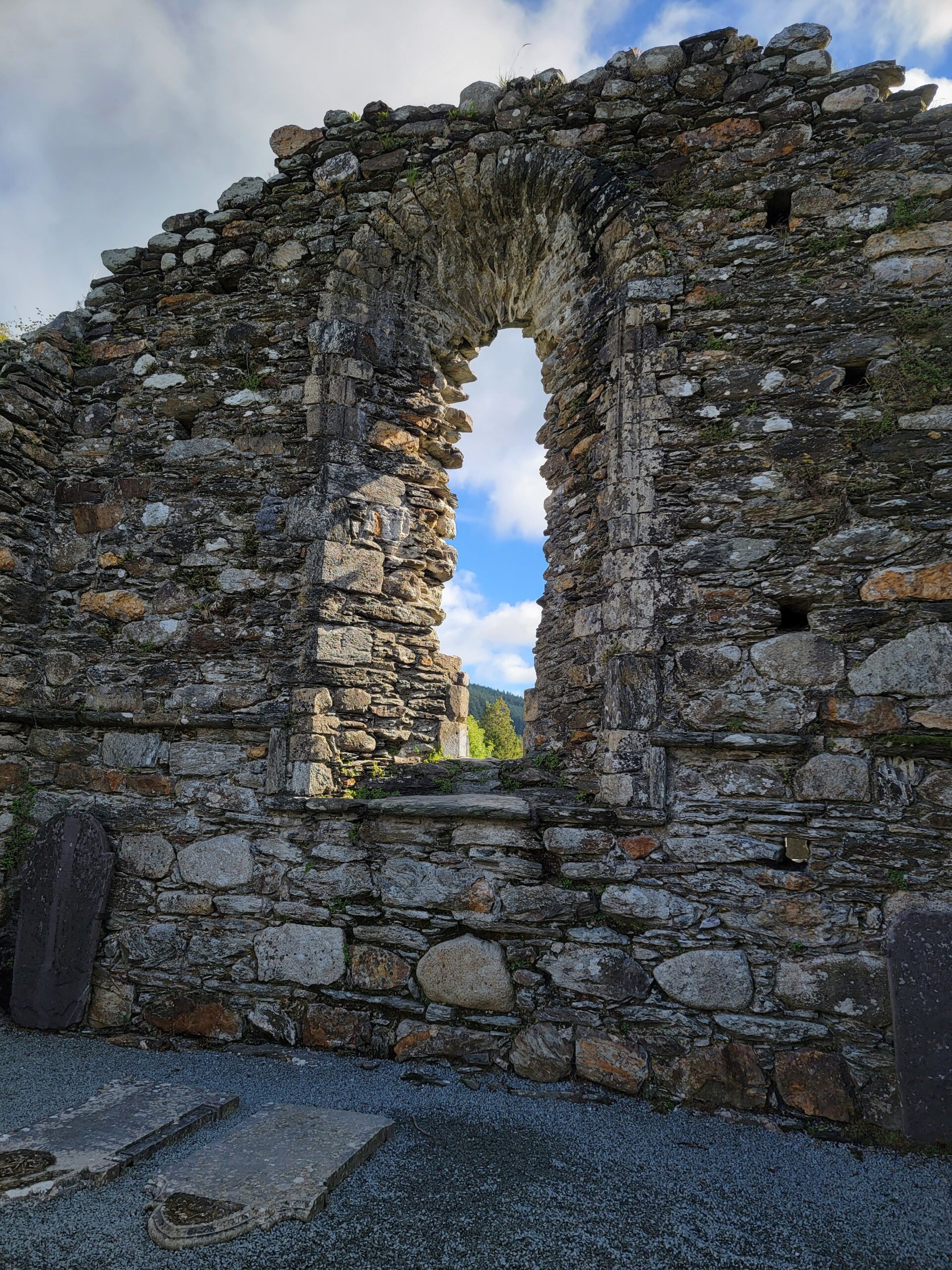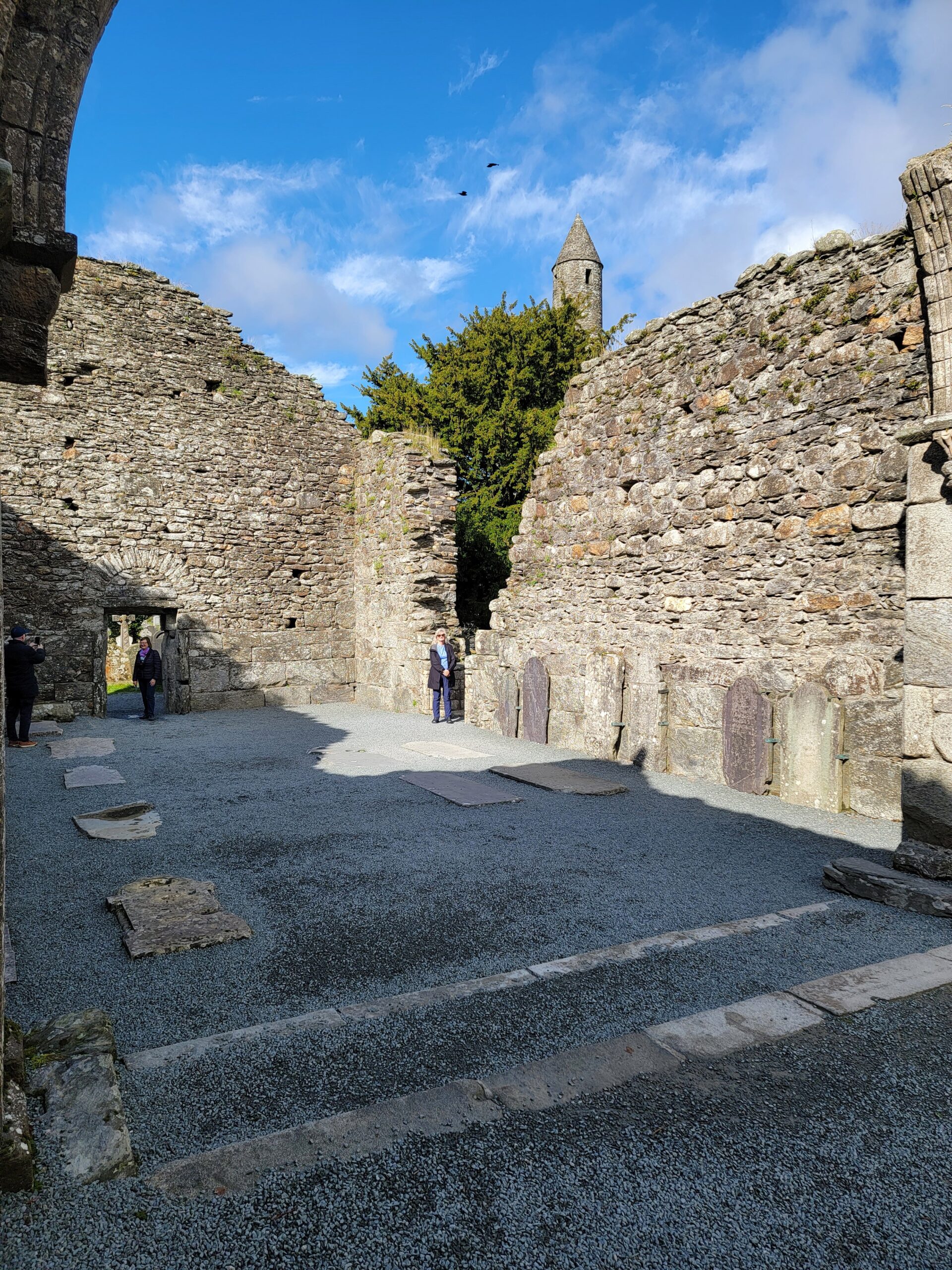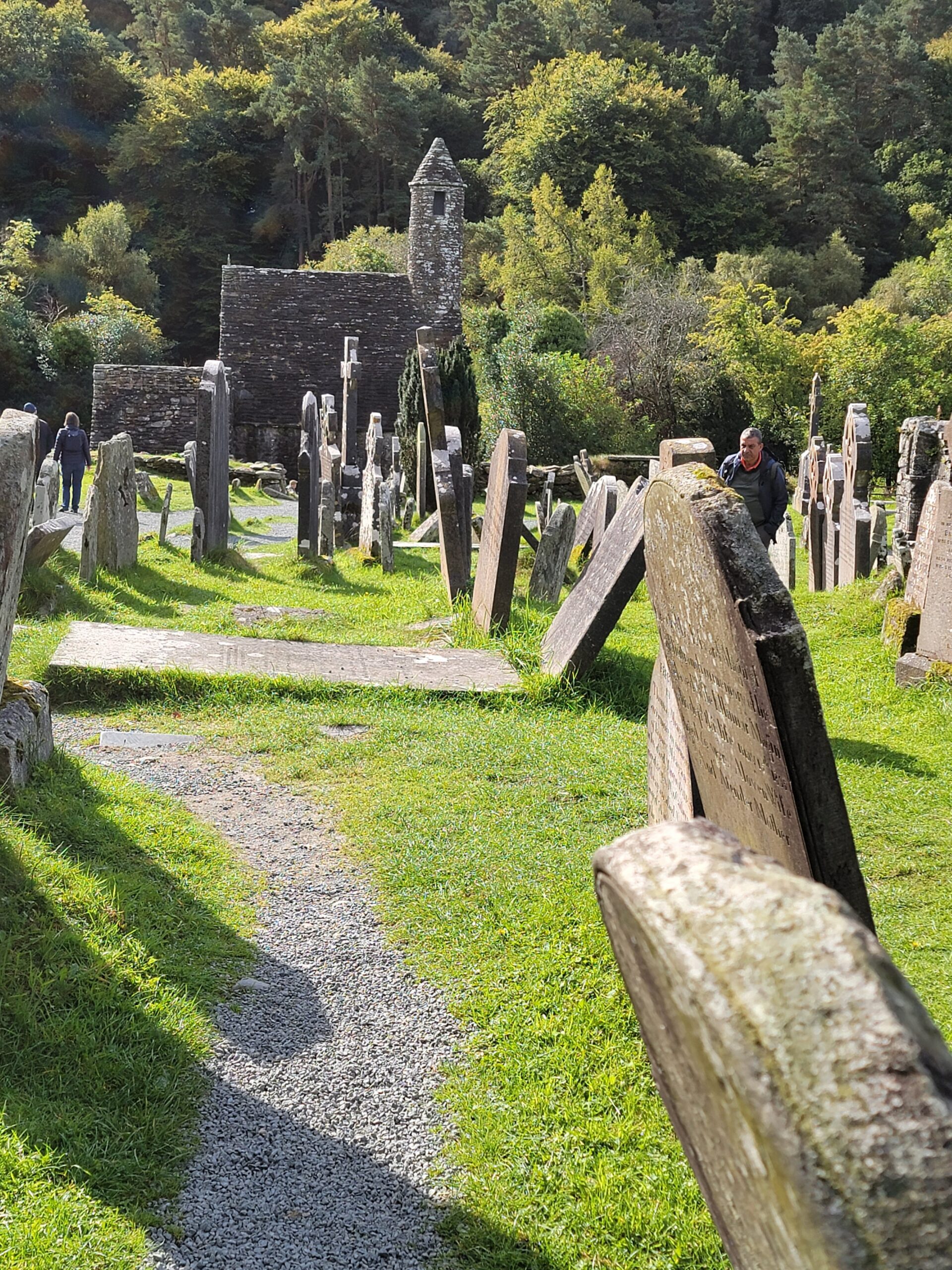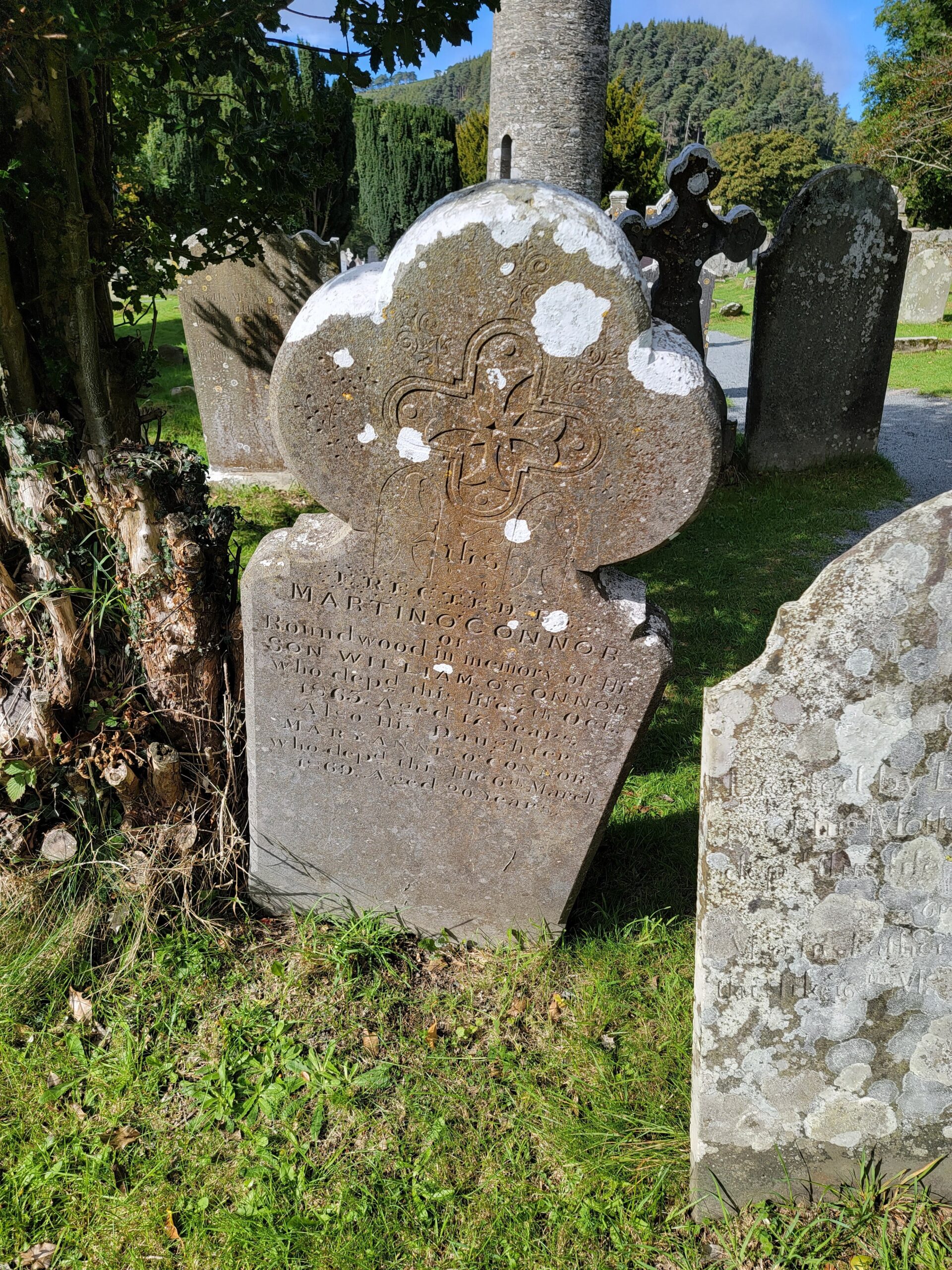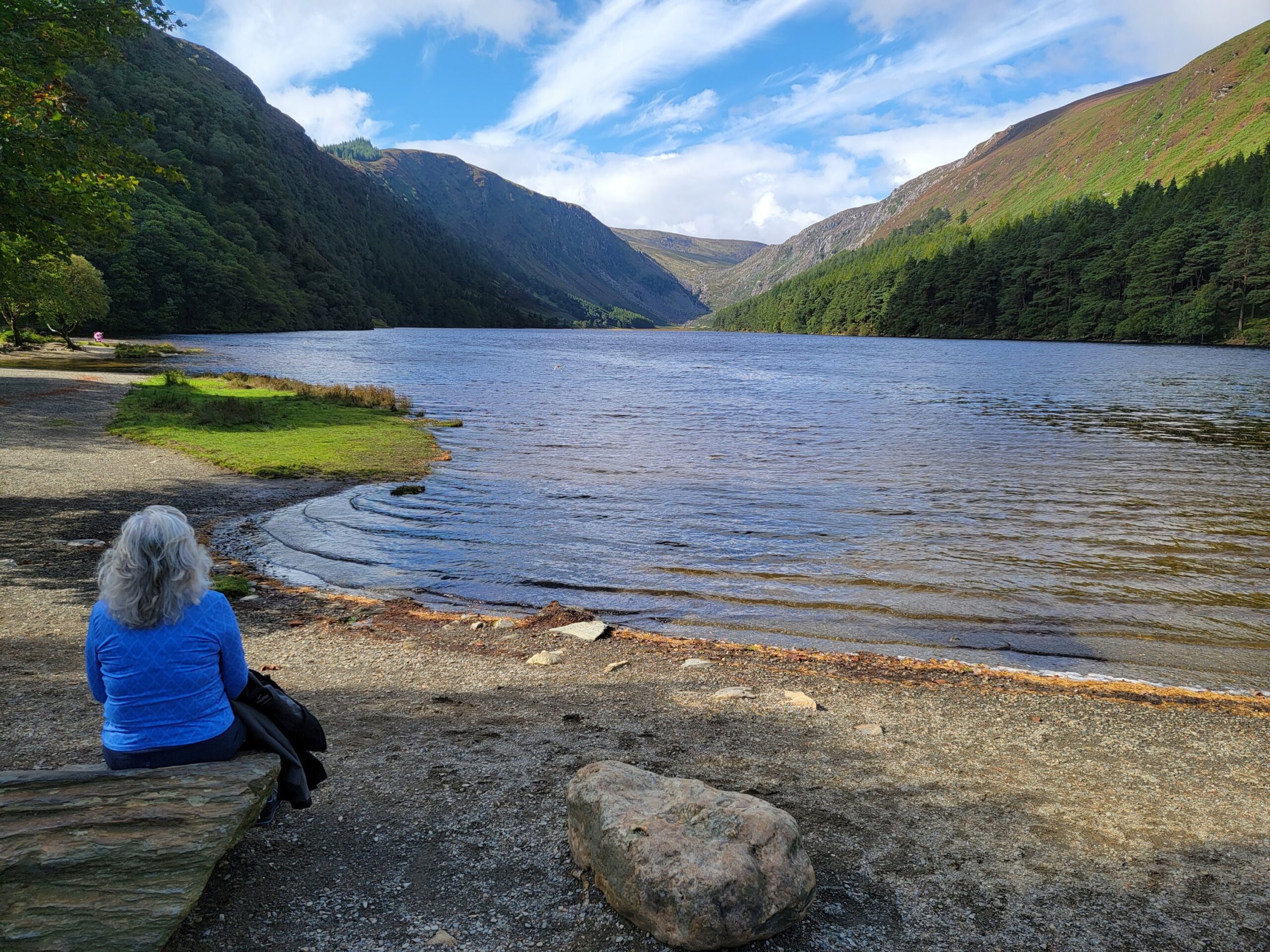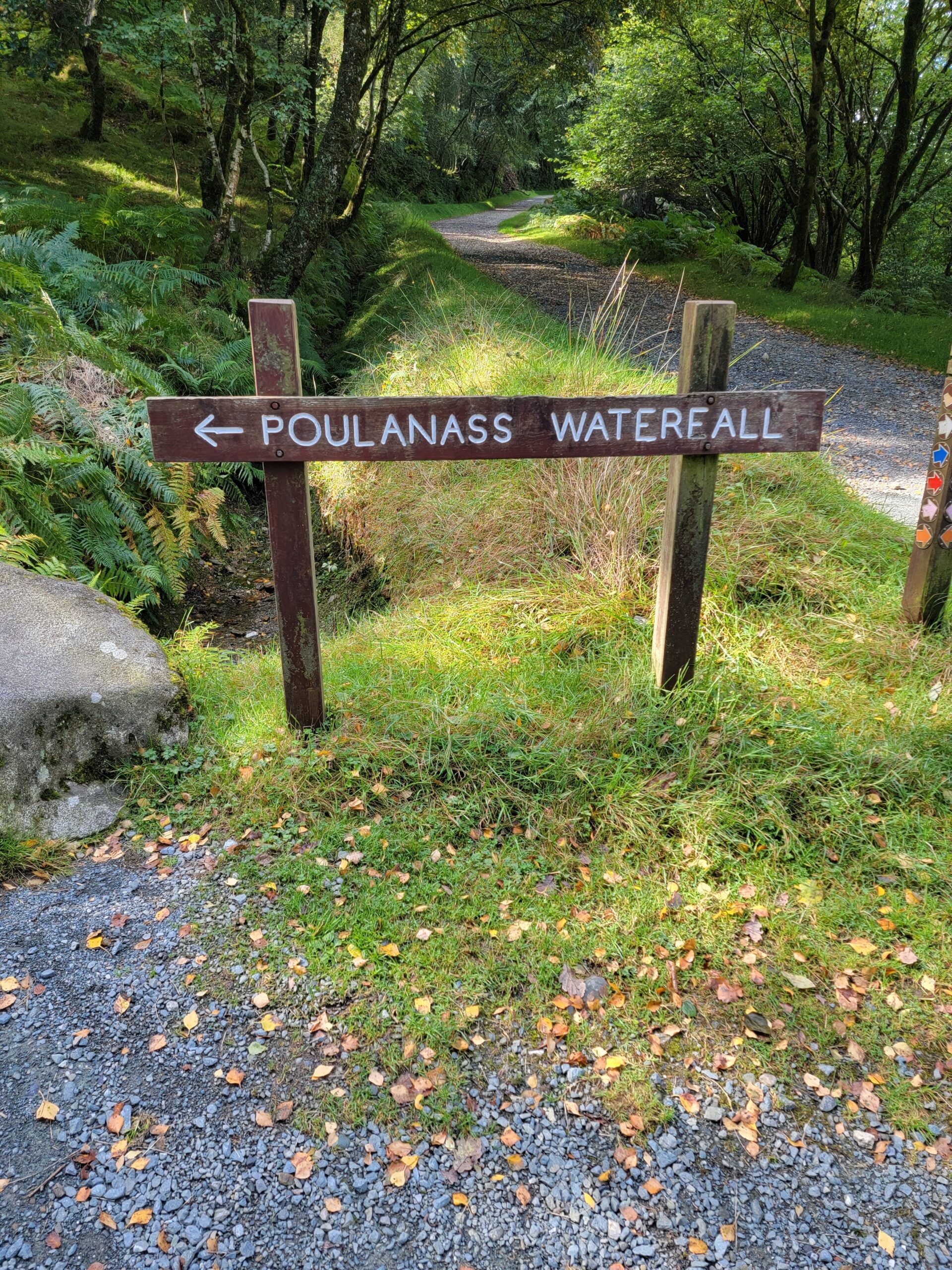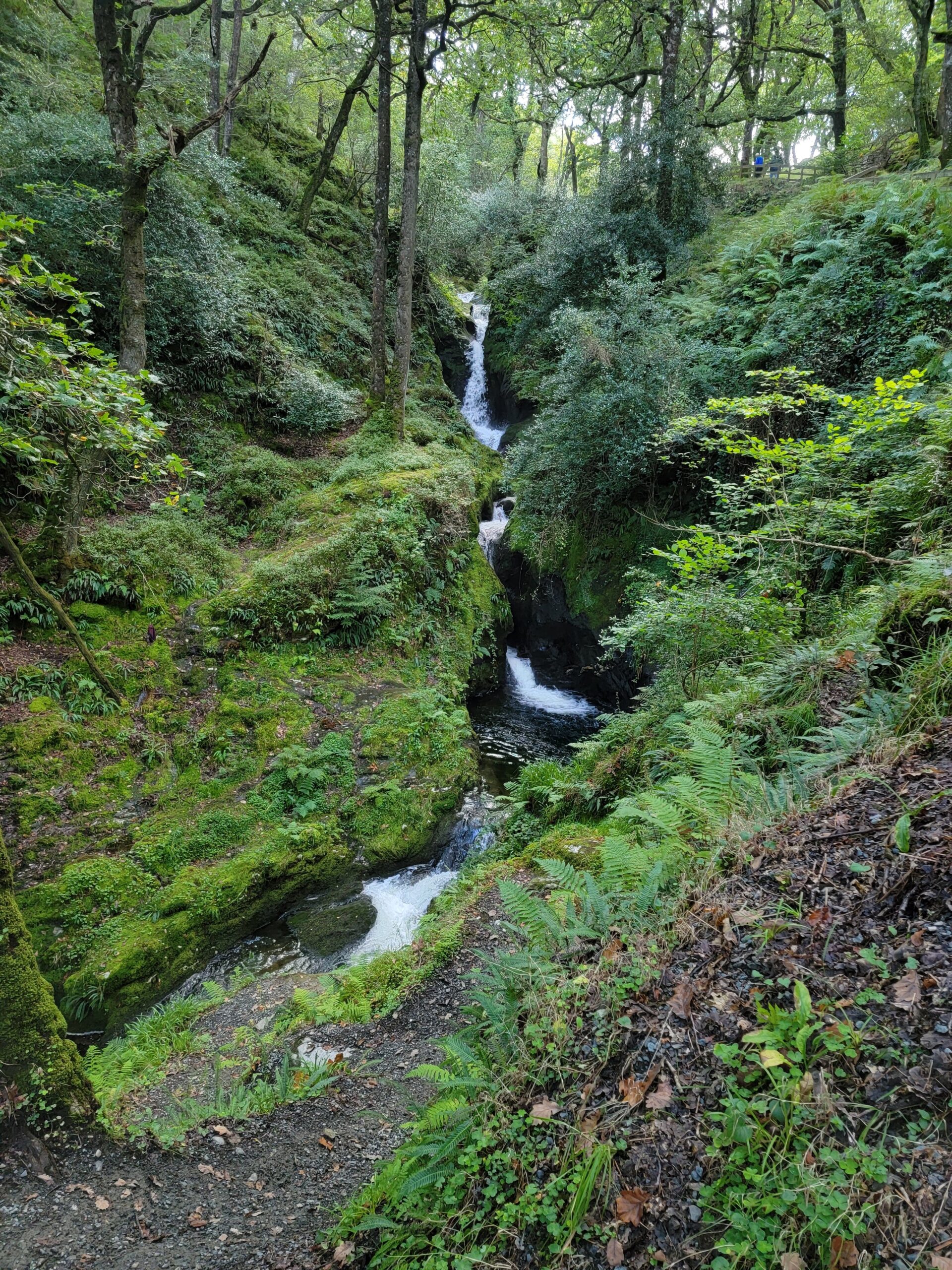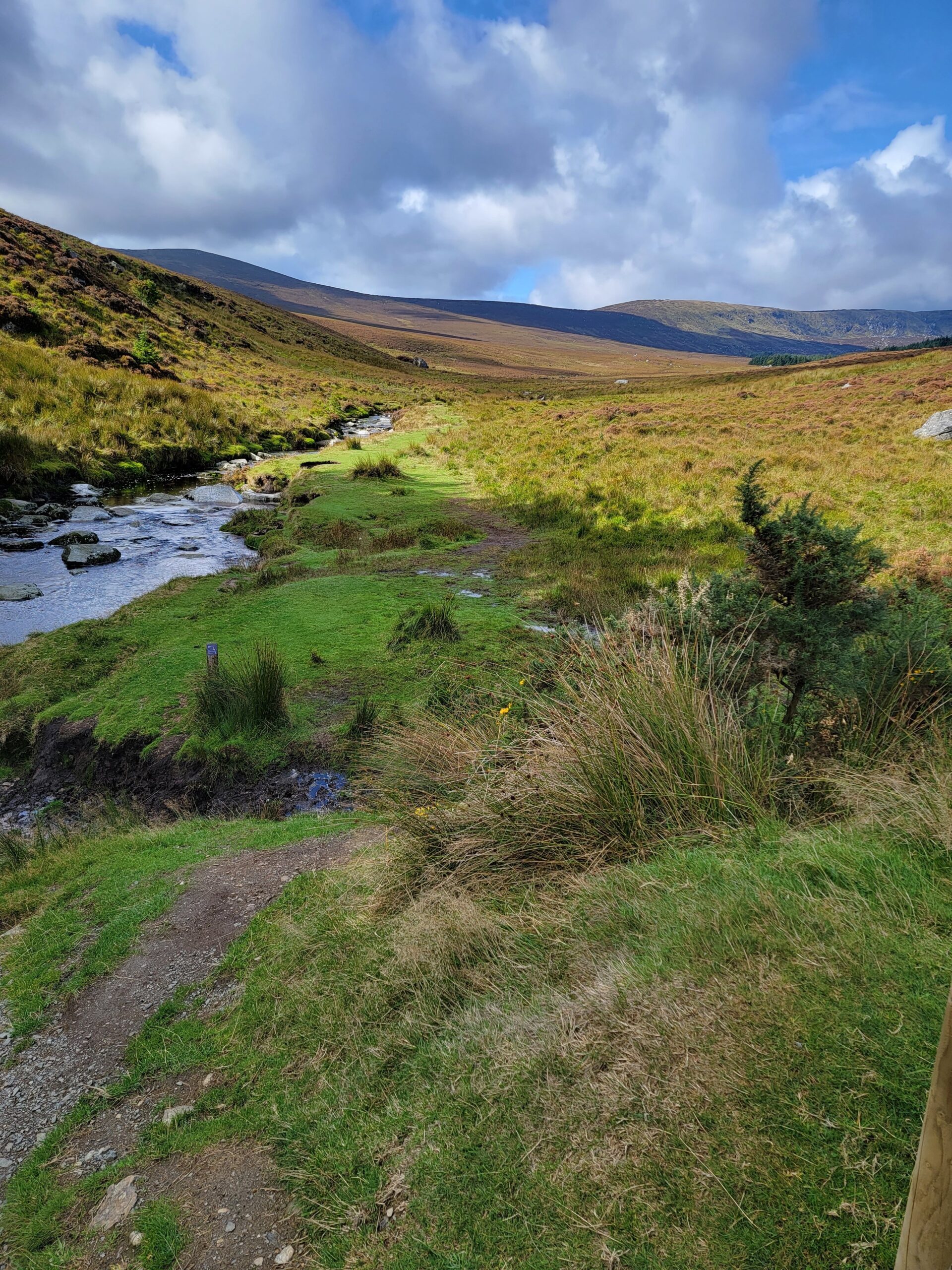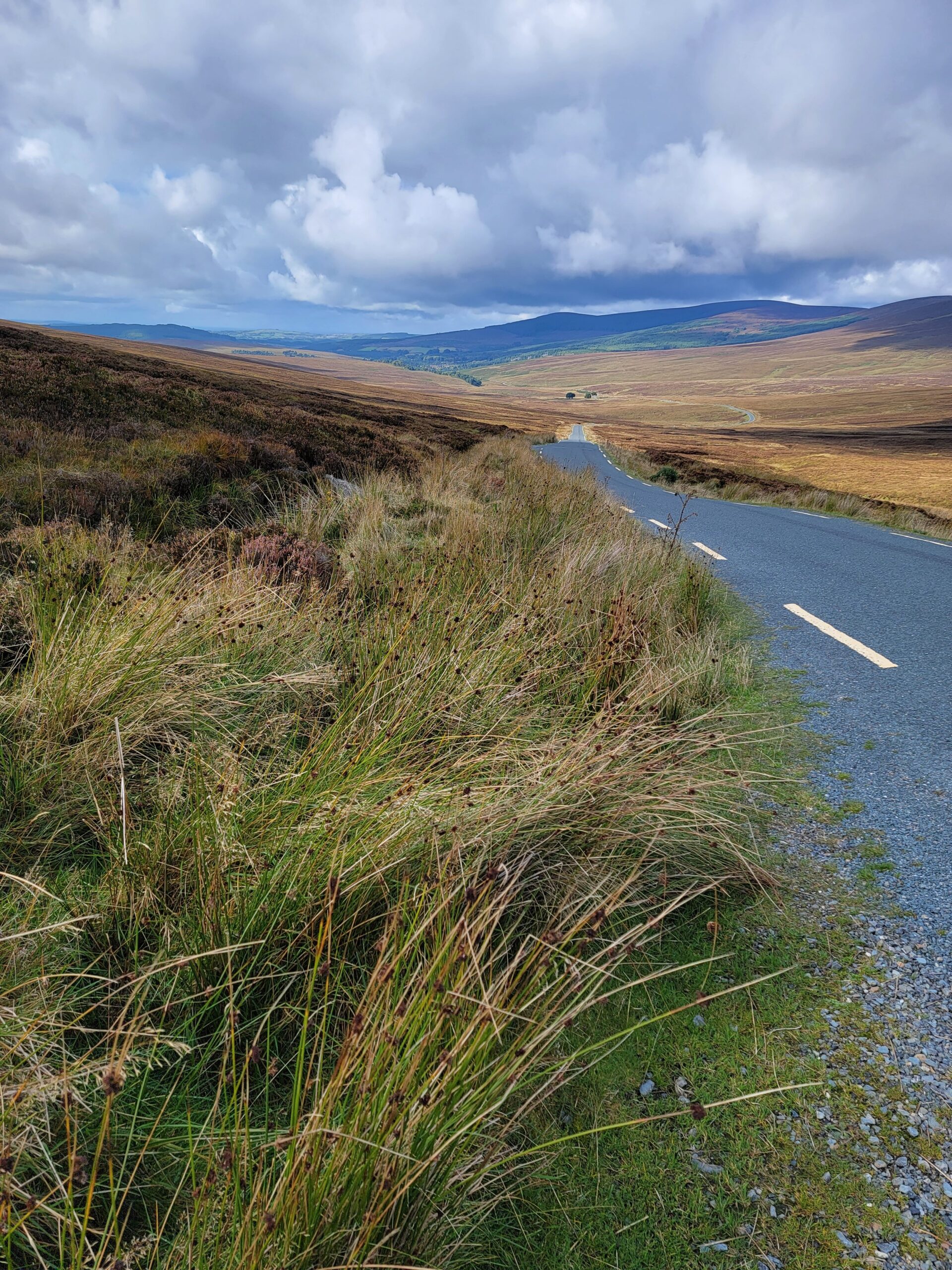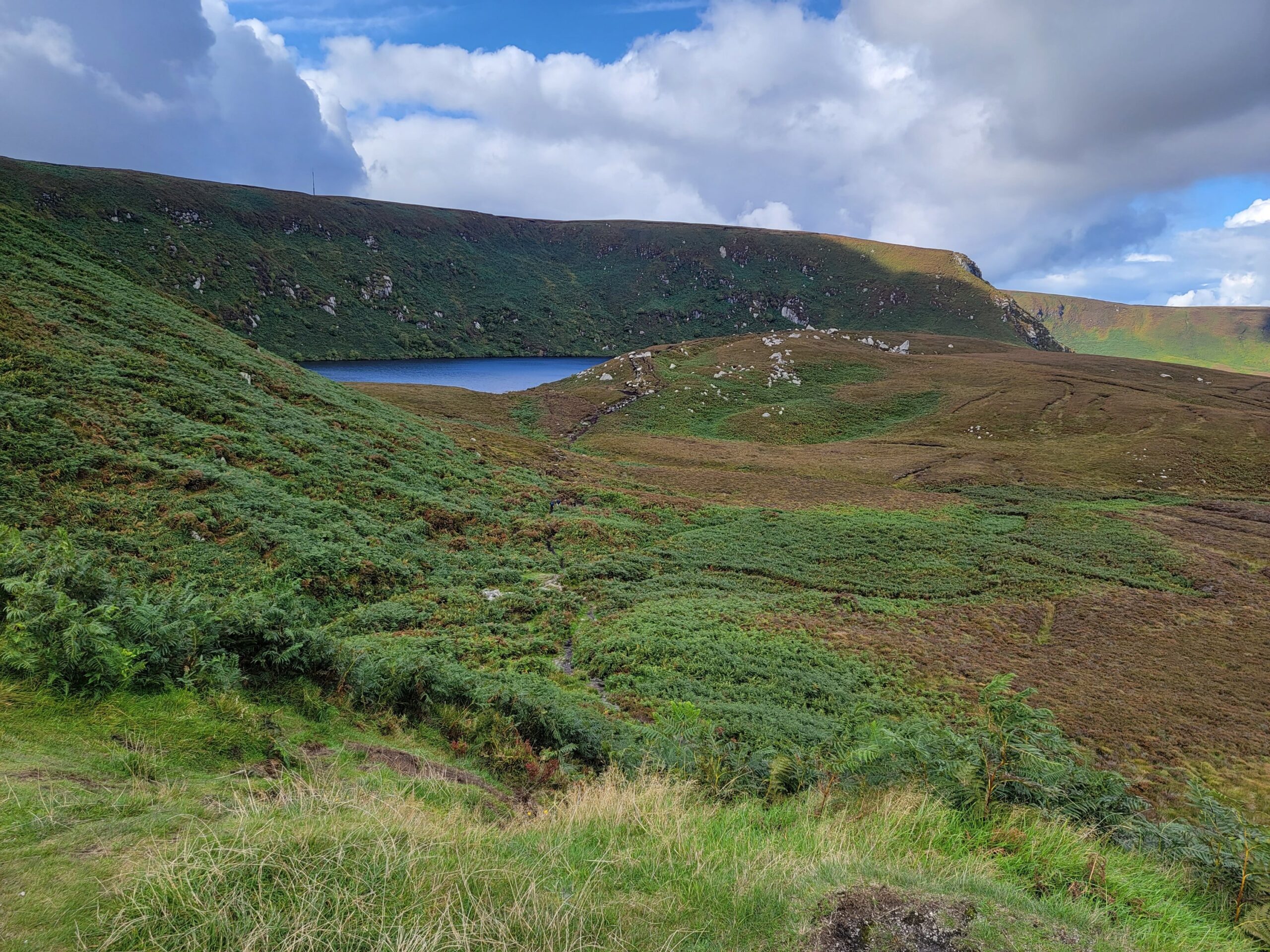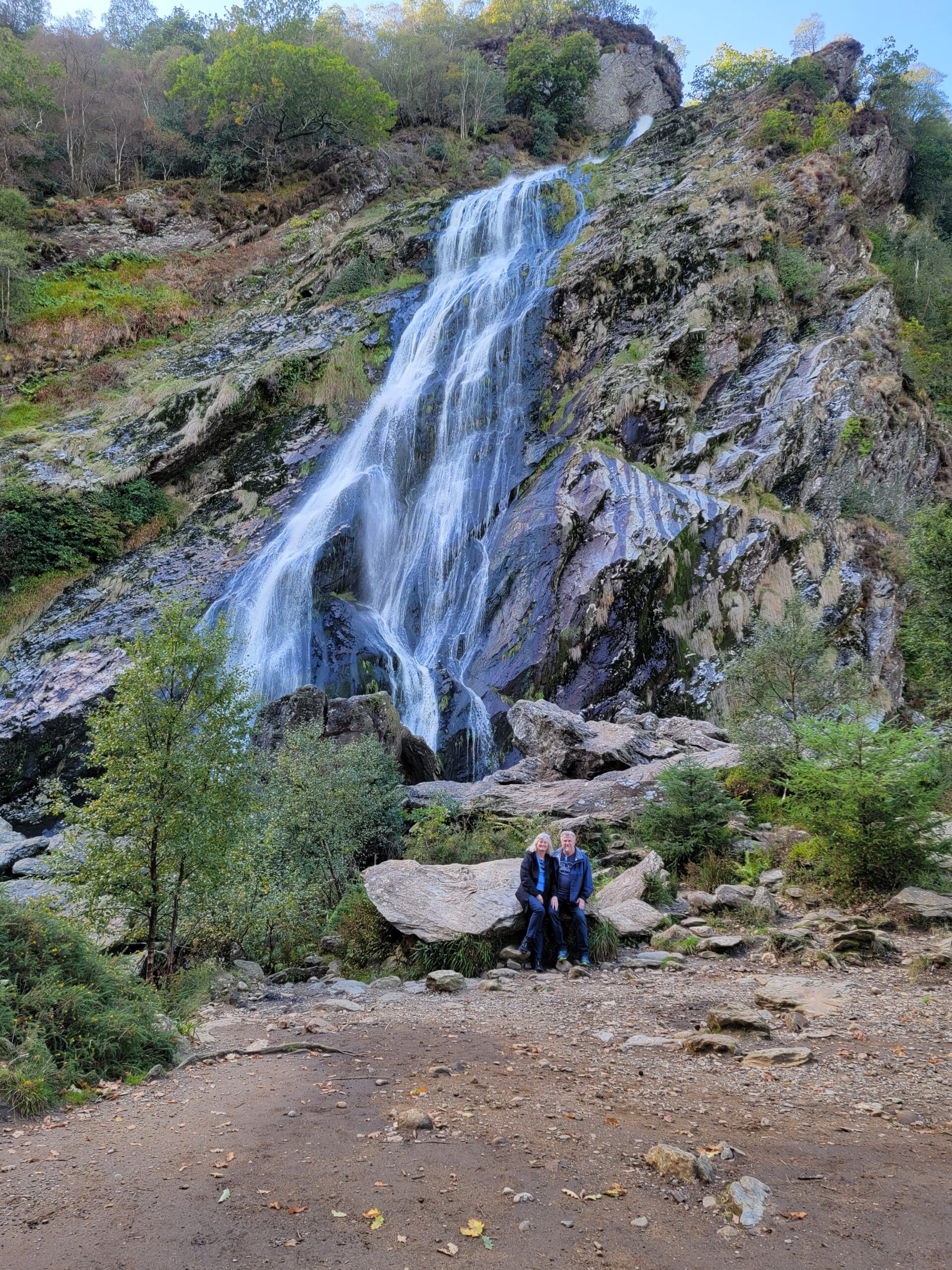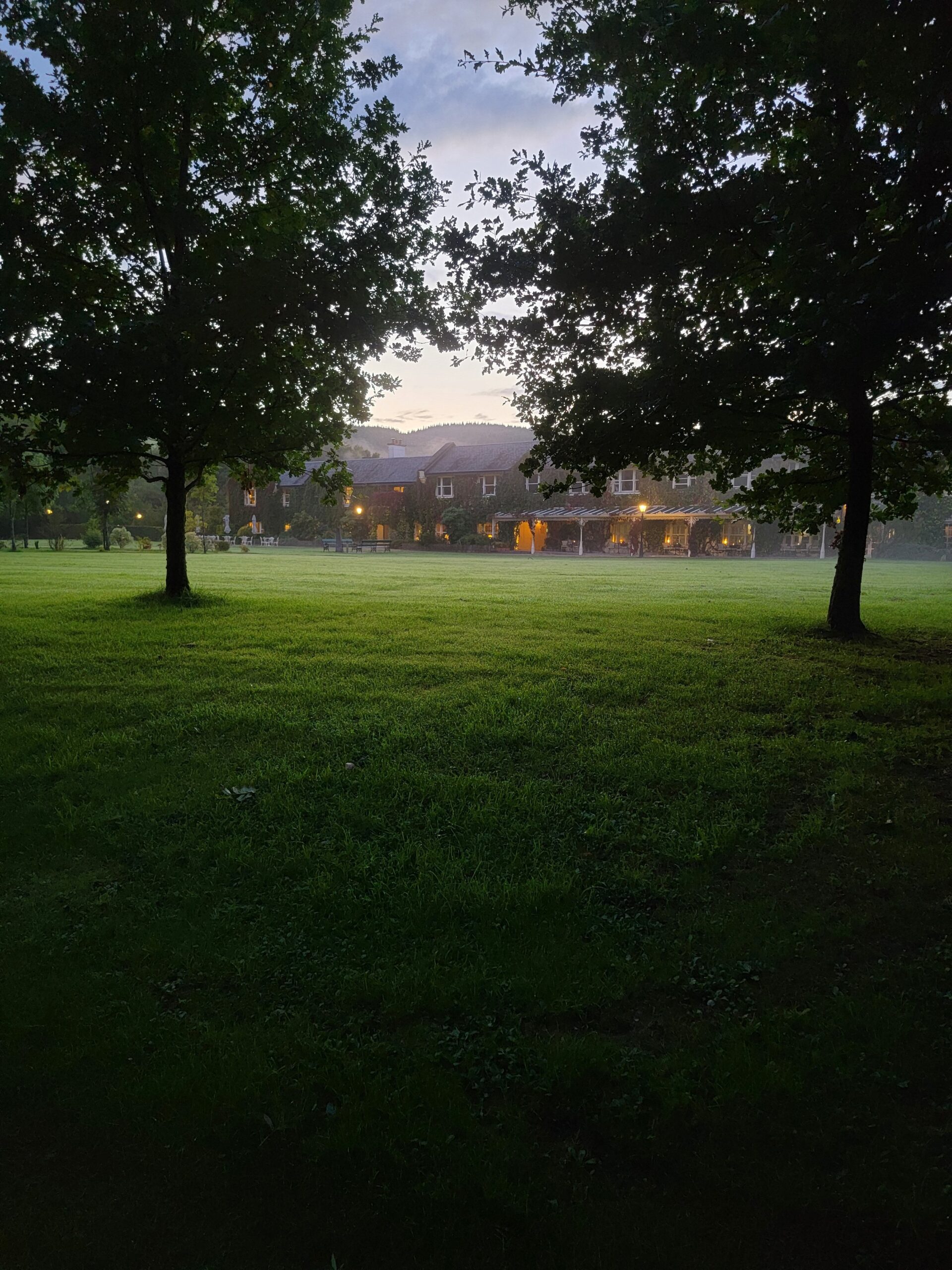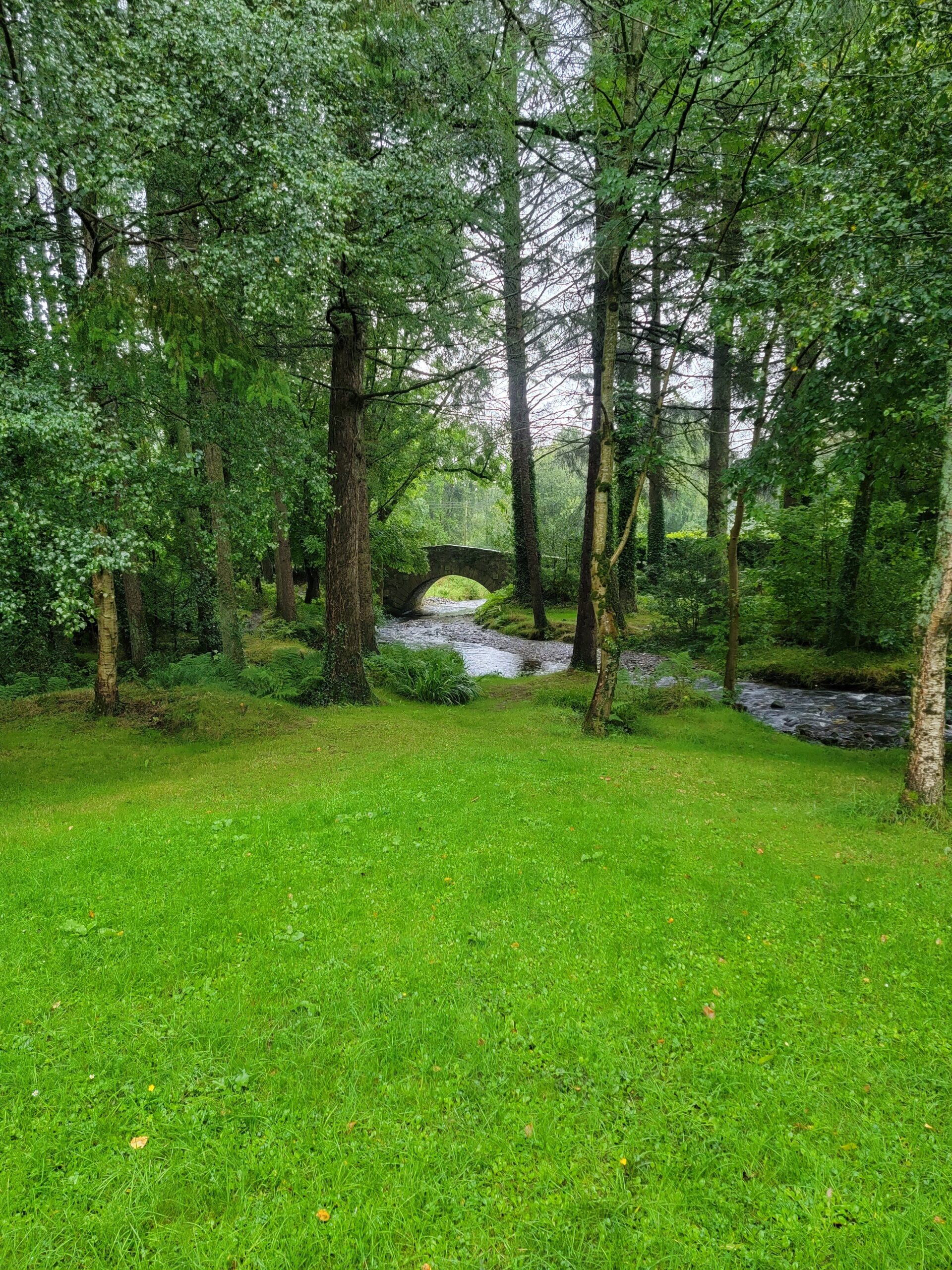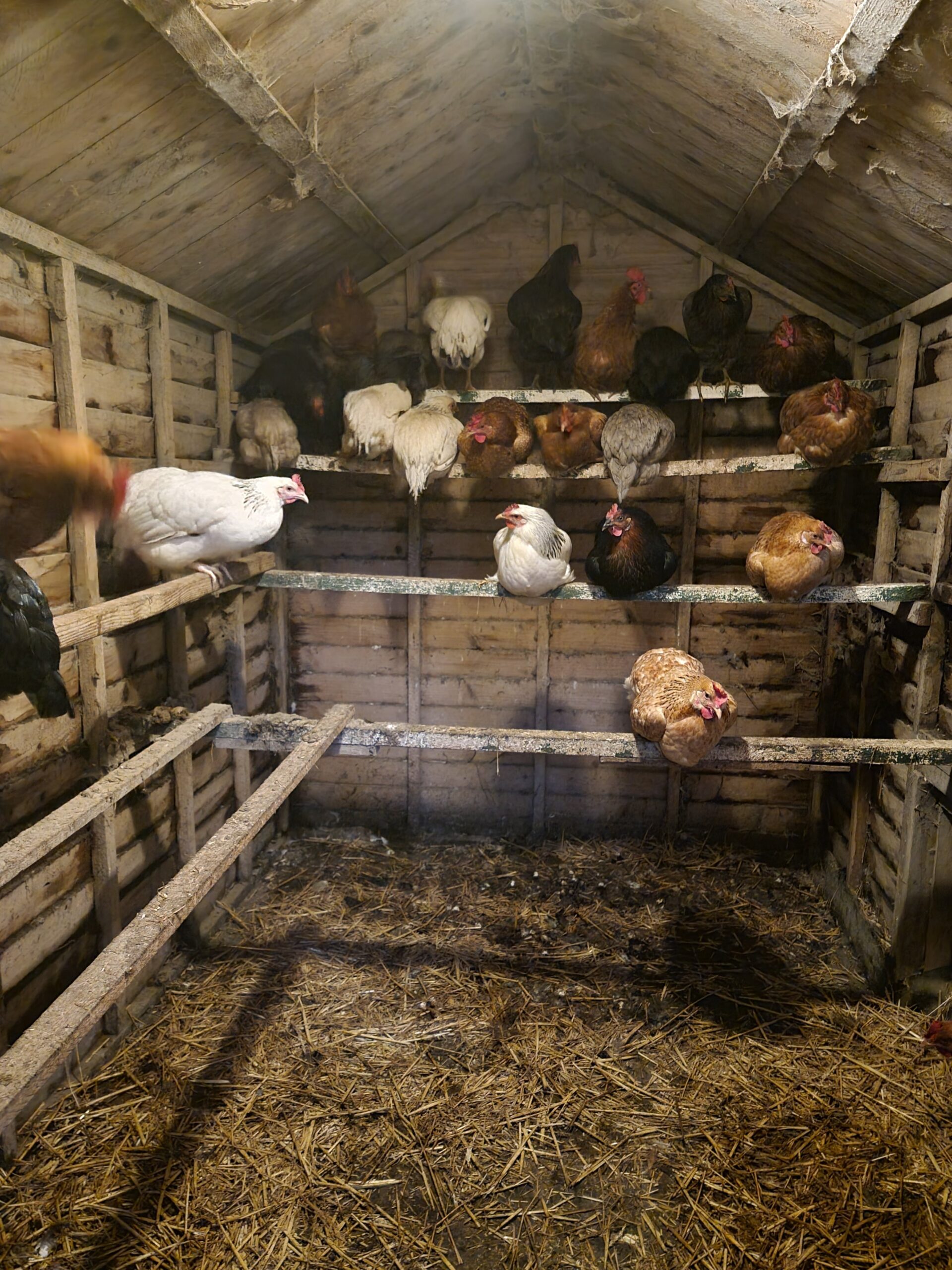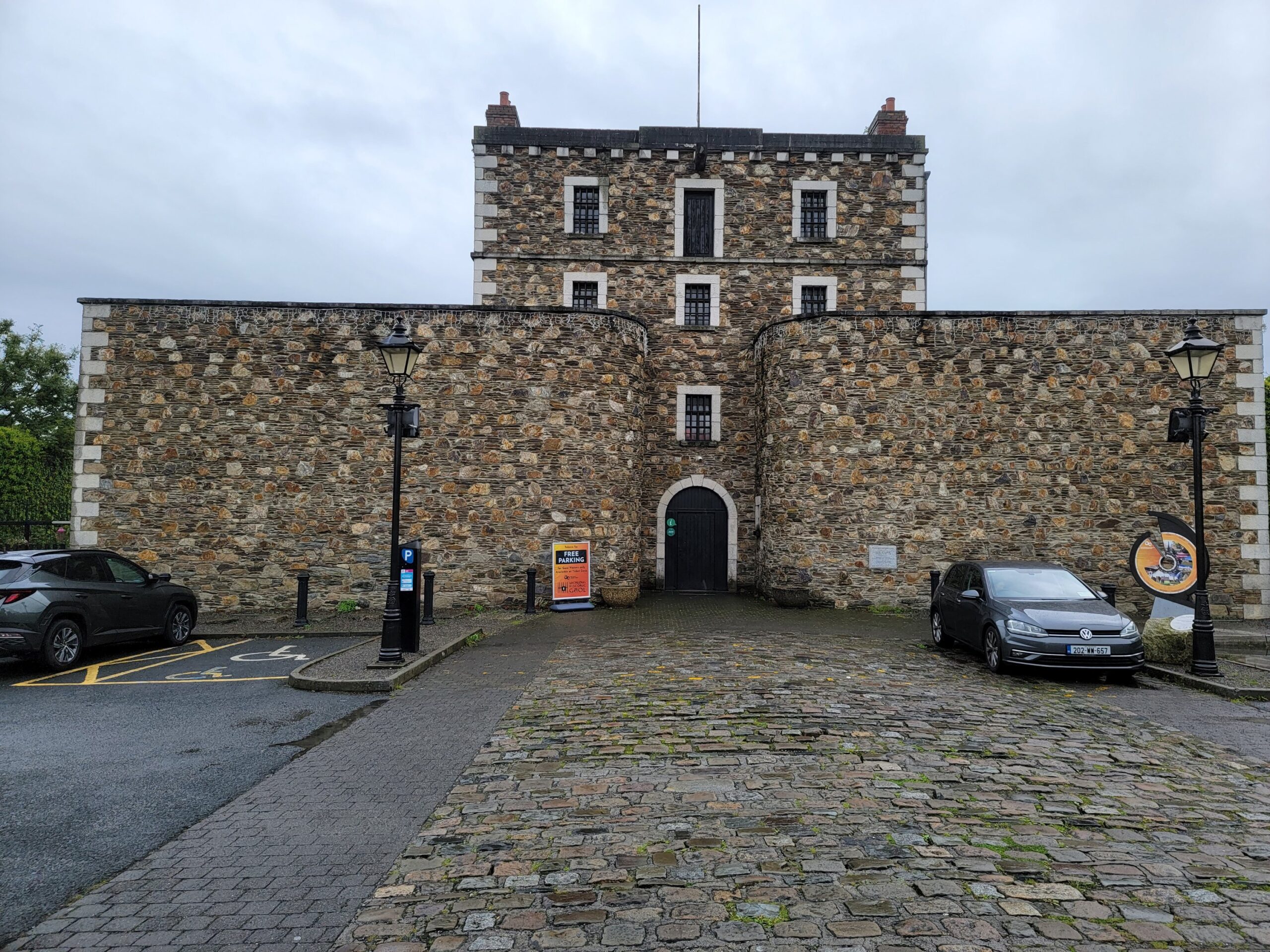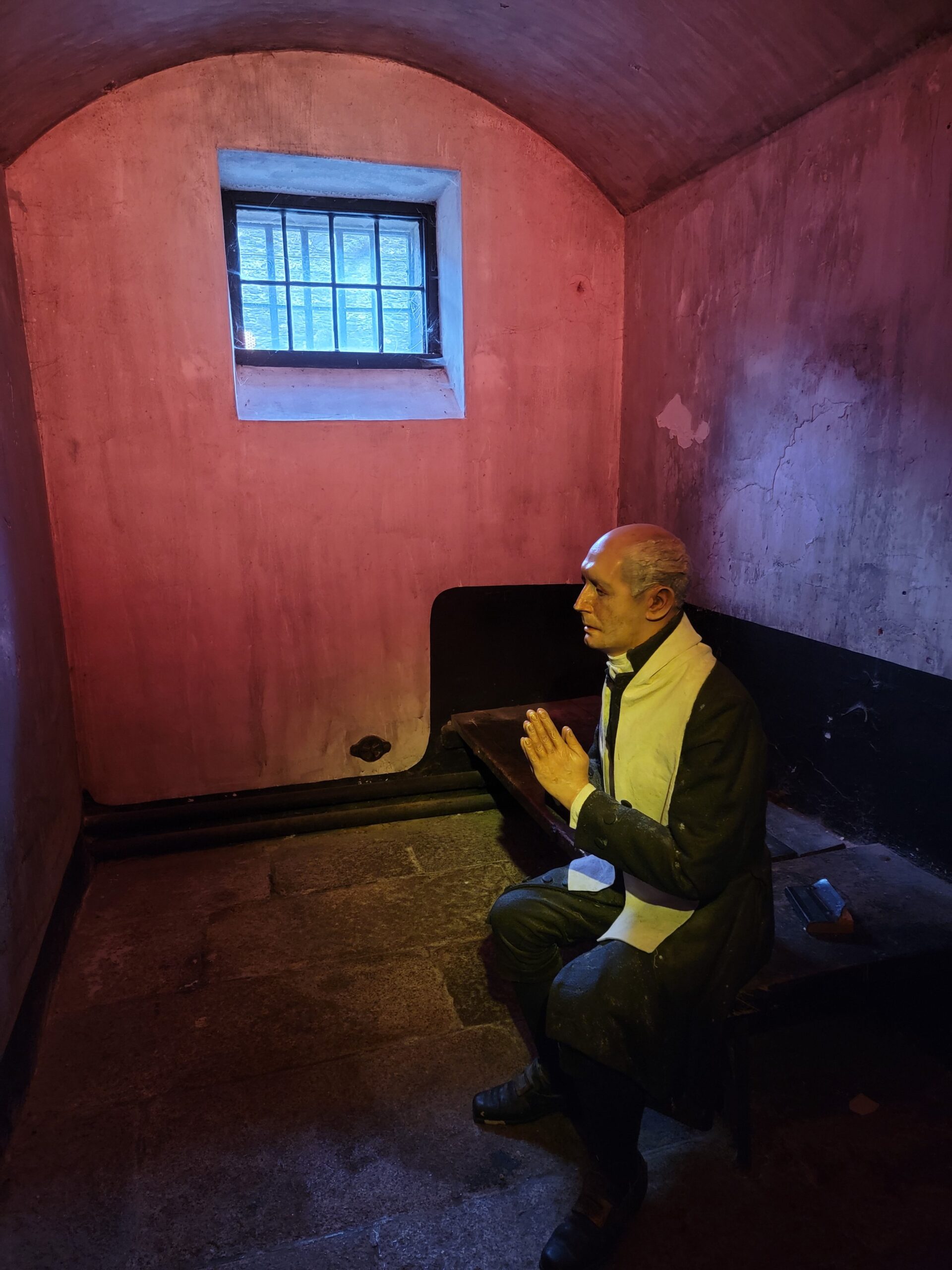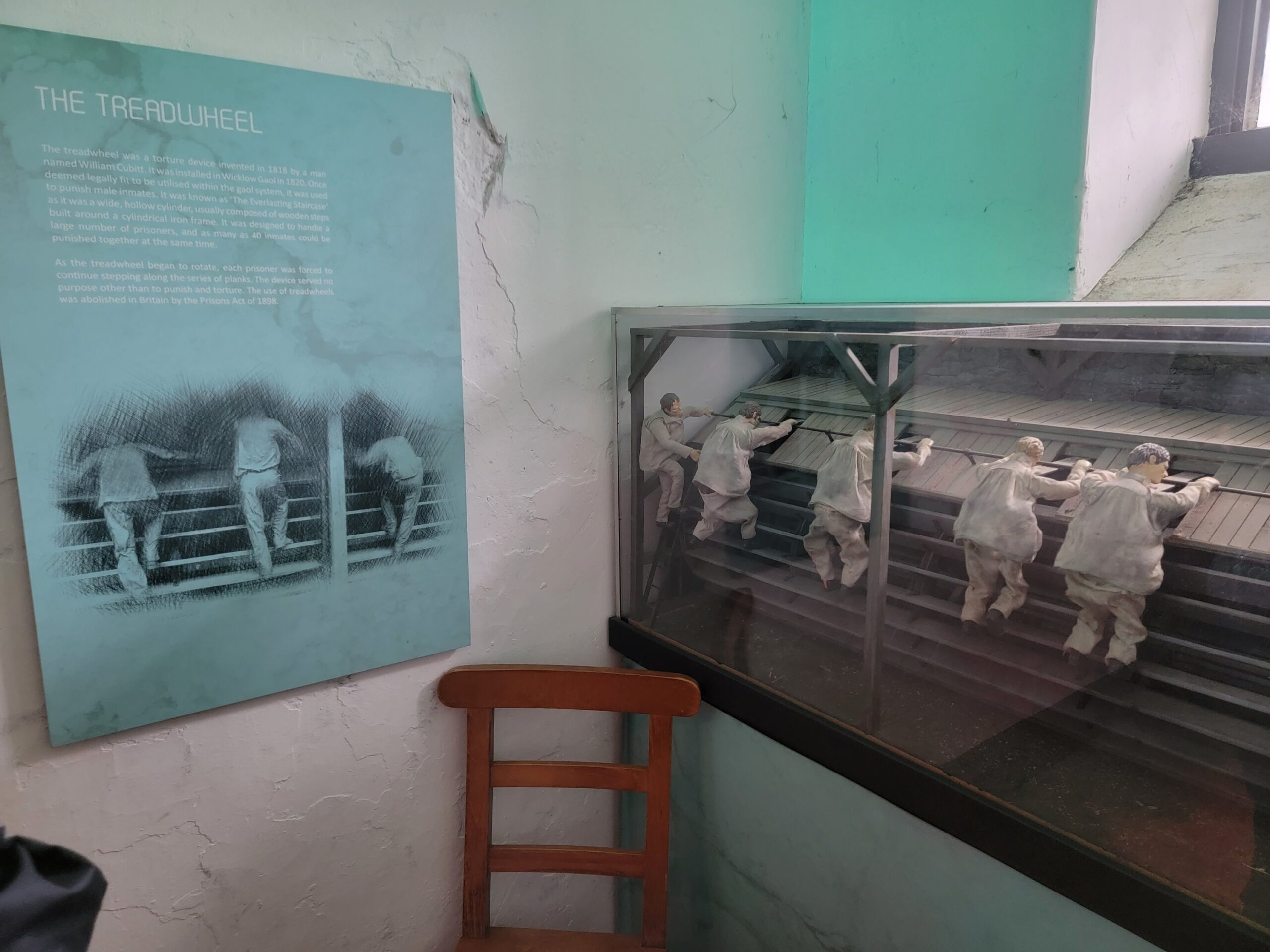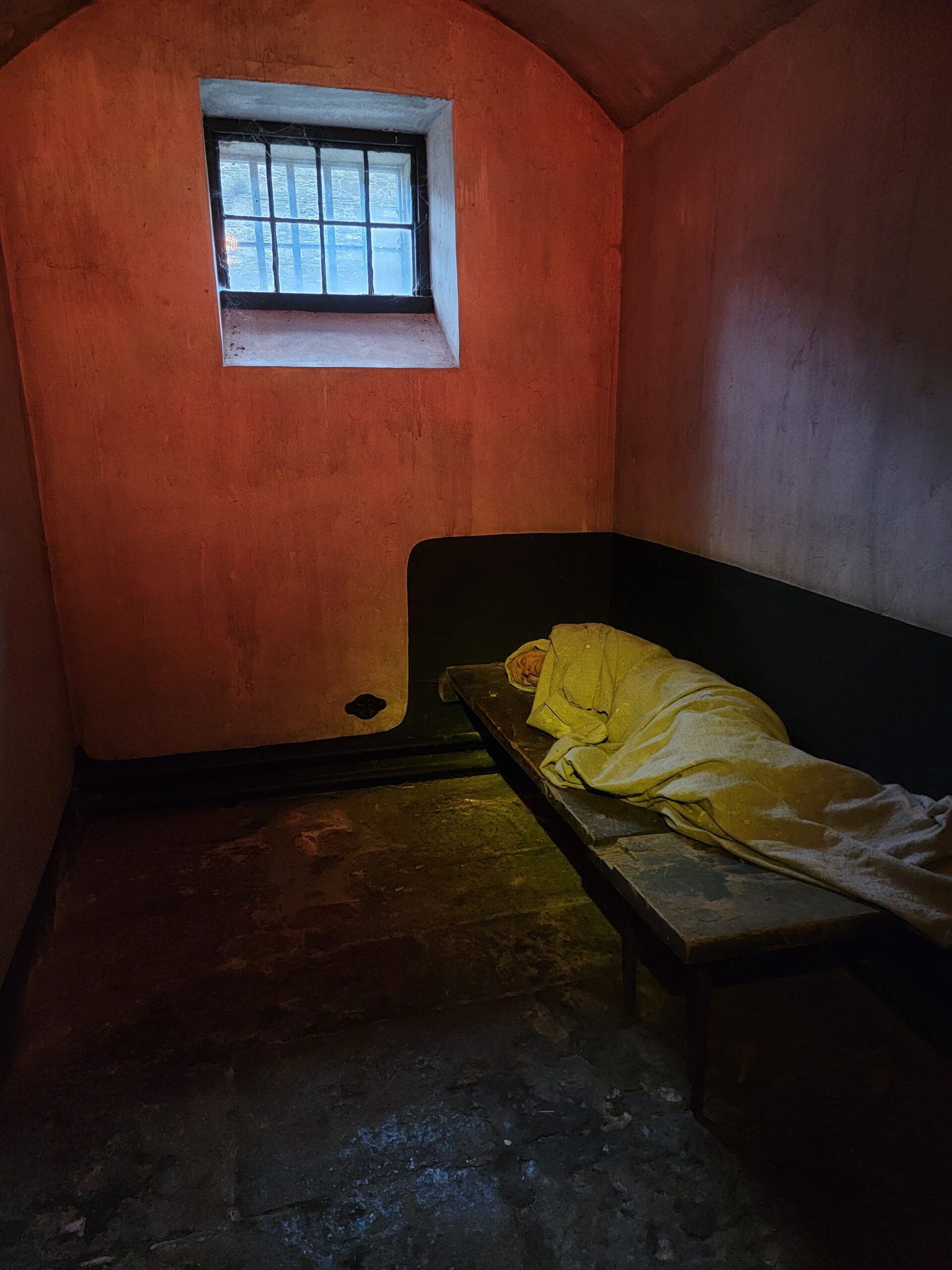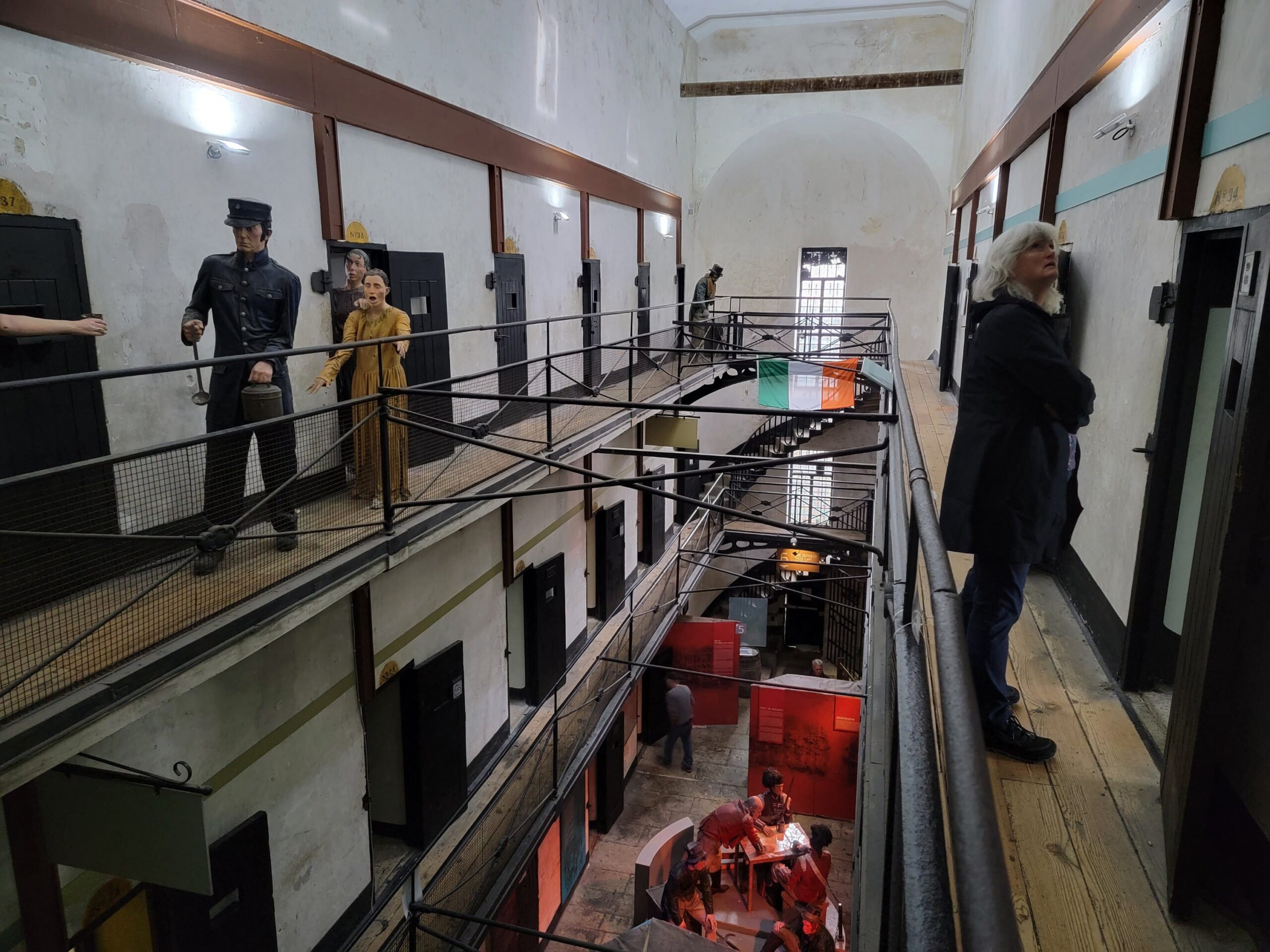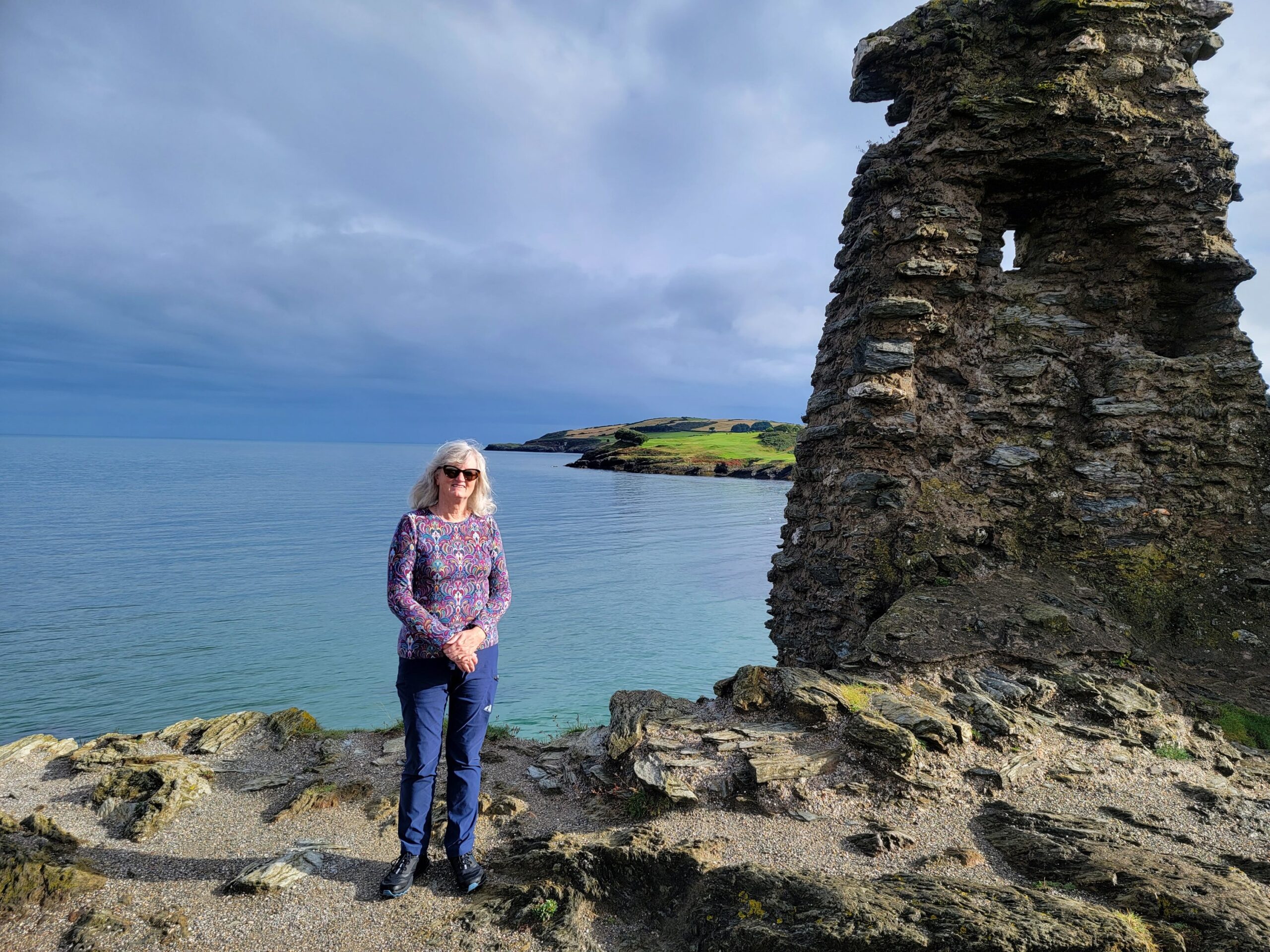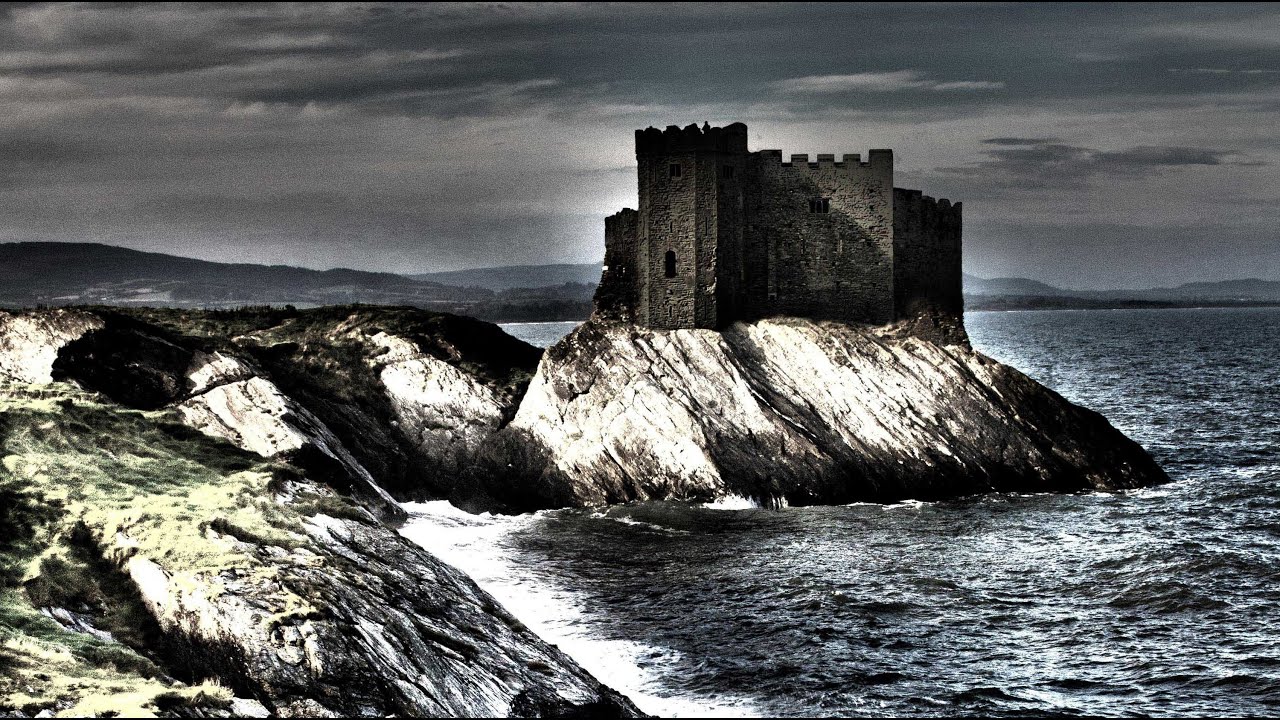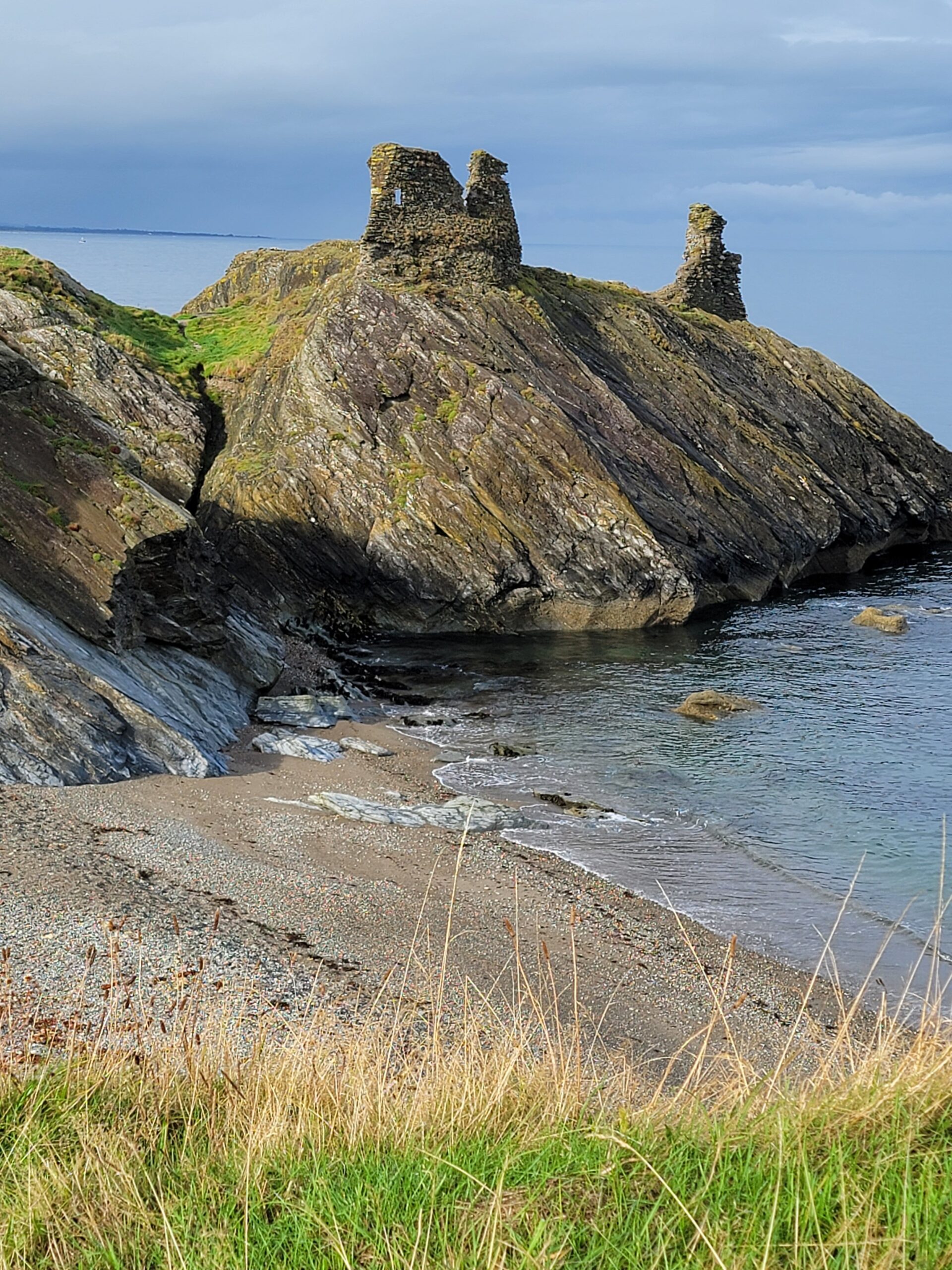We had excellent weather on our second day and headed to Glendalough (pronounced Glenda”lock”, don’t ask me how lough equals lock, must be a “k”nife thing) to see one of the most popular sites in Ireland, the Monastic City.
This early Christian monastic settlement was founded in the 6th century, and is in remarkable condition for it’s age. The most impressive feature is the Round Tower, at 100 feet high, built between 900 and 1200.
The window in the Cathedral has taken on an shark teeth appearance through the ravages of time.
Another shot of the Cathedral.
There are numerous graves spread throughout the site, and many of the headstones are leaning precariously.
There was even an O’Connor headstone. My Grandfather on my mothers side was an O’Connor…curious if they were related in some way.
There is a hike you can do up into the valley from the Lower Lake to the Upper Lake (the name Glendalough means “the valley of the two lakes”). The view from the Upper Lake further into the canyon is gorgeous. Love these glacially carved canyons!
There is a small waterfall you can hike up to near the Upper Lake.
We then drove through the Wicklow National Park, a very remote area where we saw few cars and lots of windswept shrubland…and bizarrely placed speed bumps here and there, with no reason for their existence. By the way, they don’t often mark their speed bumps, and many of them are unpainted, so be careful or you’ll launch yourself! Despite it’s somewhat high desert appearance, it was a beautiful spot to drive through.
The next photo was taken from the Sally Gap, a crossing point over the hills.
Not too far north of the Sally Gap we saw this small lake off the road.
We made our way to the highest waterfall in Ireland, Powerscourt Falls. This is on private property just outside of the National Park, but the family who owns it has taken excellent care of the area. Apparently there have been over 50 movies and TV series that have filmed here, including Vikings (haven’t seen it) and Excalibur (saw it a LONG time ago). If you’ve seen the waterfall in something, let us know!
Coming up next is Kilkenny, a famous city from the South Park cartoons.
